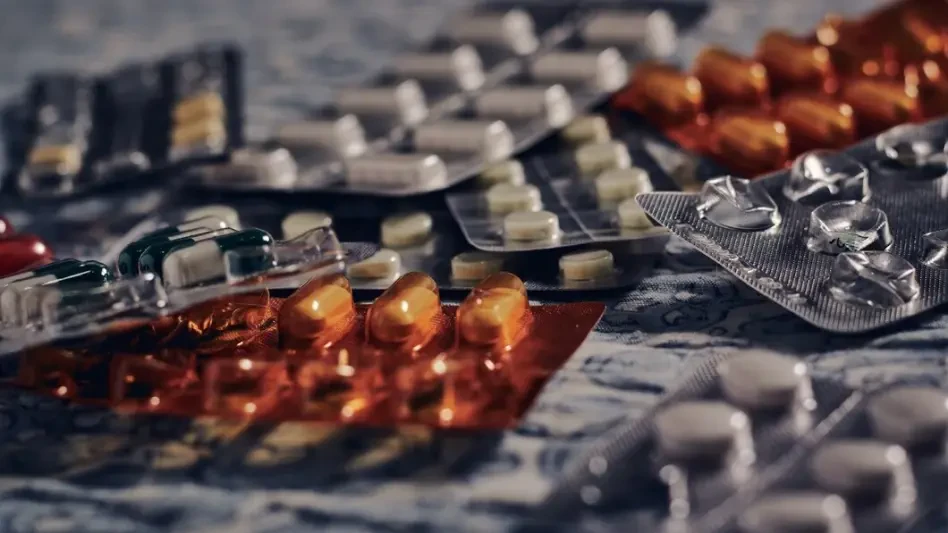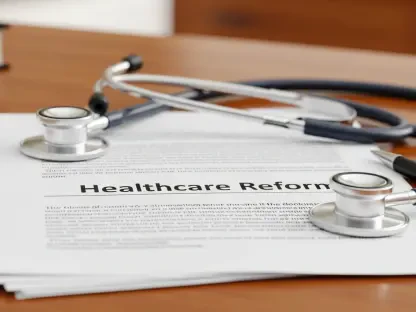Setting the Stage for a Growing Crisis
The illegal weight-loss drug market in the UK has emerged as a pressing concern, threatening public health on an unprecedented scale with a surge in demand for quick-fix solutions to obesity. Unscrupulous players have flooded the market with untested and unauthorized medications, often laced with dangerous substances, undermining legitimate healthcare systems and putting countless lives at risk as consumers unknowingly purchase products that lack safety guarantees.
Regulatory bodies like the Medicines and Healthcare products Regulatory Agency (MHRA) are at the forefront of this battle, striving to curb the proliferation of illicit drugs. The industry faces a dual challenge: protecting vulnerable individuals from harm while dismantling sophisticated criminal networks that profit from desperation. This report delves into a landmark operation that underscores both the severity of the issue and the determination to address it.
Unpacking the Illegal Weight-Loss Drug Trade
The scope of the illegal weight-loss drug market in the UK is staggering, driven by a combination of societal pressures for rapid weight loss and the accessibility of unregulated products online. These drugs, often marketed as miracle cures, bypass stringent safety checks, leading to severe health complications, including cardiovascular issues and even fatalities. Public health experts estimate that thousands of individuals fall victim to these deceptive practices annually, highlighting a critical need for intervention.
Organized crime networks play a pivotal role in this illicit trade, orchestrating the production and distribution of counterfeit medications with alarming efficiency. Their operations often mimic legitimate pharmaceutical supply chains, making detection challenging. The MHRA, tasked with safeguarding medicinal integrity, has intensified efforts to disrupt these networks, recognizing that regulatory oversight is essential to prevent further harm to unsuspecting consumers.
Inside the Northampton Warehouse Operation
Scale and Discoveries of the Raid
In a groundbreaking move, the MHRA conducted a raid on a warehouse in Northampton, uncovering what is believed to be the first known illicit manufacturing facility for weight-loss drugs in the UK. The operation yielded a massive haul, including tens of thousands of empty weight-loss pens, over 2,000 unlicensed retatrutide and tirzepatide pens primed for distribution, raw chemical ingredients, and advanced packaging equipment. Additionally, authorities seized around £20,000 in cash tied to medicines trafficking.
Located on an industrial estate, the site was a hub for large-scale production, equipped to churn out and distribute unauthorized products across the country. The discovery of such a sophisticated setup points to the alarming level of organization within criminal enterprises, raising questions about how many similar facilities may still be operating undetected. This seizure marks a significant milestone in exposing the hidden infrastructure behind the illegal trade.
Public Safety Risks Averted
The dangers posed by untested weight-loss drugs cannot be overstated, as emphasized by Andy Morling, head of the MHRA’s Criminal Enforcement Unit. These illicit products, often containing harmful or unknown substances, can lead to life-threatening conditions, with no assurance of quality or dosage accuracy. The Northampton raid prevented a substantial volume of such hazardous items from reaching the market, potentially saving numerous lives.
Beyond immediate health risks, the operation dealt a critical blow to the criminal networks profiting from public vulnerability. By dismantling this facility, the MHRA disrupted a key node in the supply chain, sending a strong message to those involved in medicines trafficking. This action underscores the importance of proactive enforcement in safeguarding communities from the perils of unregulated pharmaceuticals.
Navigating Challenges in Enforcement
Combating the illegal weight-loss drug market presents multifaceted challenges, primarily due to the sophistication of manufacturing and distribution networks. Criminals employ advanced techniques to evade detection, often operating through encrypted online platforms and using legitimate-looking branding to deceive consumers. Tracking these operations requires substantial resources and expertise, as illicit facilities are frequently hidden within industrial zones or residential areas.
Moreover, the rapid evolution of distribution channels, particularly through social media and dark web marketplaces, complicates enforcement efforts. Regulatory agencies face an uphill battle in staying ahead of these trends, as new methods of smuggling and advertising emerge constantly. The ongoing threat to public health demands innovative strategies to close loopholes exploited by organized crime.
The global nature of the trade further exacerbates the issue, as raw materials and finished products often cross international borders. Coordination between nations remains inconsistent, allowing criminals to exploit jurisdictional gaps. Addressing these systemic hurdles is vital to curbing the spread of dangerous weight-loss drugs and protecting vulnerable populations from exploitation.
Strengthening Regulatory and Collaborative Frameworks
The MHRA, alongside partners like the Advertising Standards Authority (ASA) and the General Pharmaceutical Council (GPhC), has implemented stringent measures to tackle the advertising of prescription-only weight-loss drugs. Enforcement notices issued this year clarify that promoting named prescription medications for weight management is strictly prohibited, aiming to limit misleading claims that lure consumers into purchasing unsafe products.
Roz Gittins, chief pharmacy officer at the GPhC, has voiced significant concerns over patient safety, urging pharmacists to adhere to ethical standards in dispensing medications. A targeted communication to the profession earlier this year highlighted risks associated with improper supply chains, reinforcing the need for vigilance. Such collaborative efforts among regulatory bodies aim to create a unified front against non-compliance and prioritize consumer protection.
These initiatives reflect a broader regulatory framework designed to address both supply and demand aspects of the illegal trade. By tightening advertising rules and enhancing oversight of distribution channels, authorities seek to reduce the accessibility of illicit drugs. Continued partnership across sectors remains crucial to ensure that enforcement translates into tangible safety outcomes for the public.
Forecasting the Fight Against Illicit Drugs
Looking ahead, stronger enforcement mechanisms are anticipated to play a central role in disrupting the illegal weight-loss drug market over the next few years, from 2025 to 2027. Increased funding for specialized units within the MHRA could bolster surveillance and raid capabilities, targeting hidden manufacturing sites more effectively. Technological advancements, such as AI-driven monitoring of online marketplaces, may also enhance the ability to detect suspicious activities.
Public awareness campaigns are expected to gain momentum, educating consumers on the risks of purchasing unverified medications and encouraging reliance on licensed healthcare providers. Empowering individuals to make informed choices could reduce demand for illicit products, weakening the financial incentives for criminal networks. Such initiatives, if scaled, have the potential to shift market dynamics significantly.
International cooperation stands as another critical pillar in this fight, with potential for joint operations and intelligence sharing to dismantle cross-border trafficking rings. Evolving regulations that harmonize standards across regions might further deter illicit trade. A multi-pronged approach, combining enforcement, education, and global collaboration, offers the best chance to mitigate the dangers posed by unauthorized weight-loss drugs.
Reflecting on Progress and Next Steps
The MHRA’s raid in Northampton stood as a pivotal moment in the battle against illegal weight-loss drug production, exposing a major manufacturing hub and seizing thousands of hazardous products. This operation, coupled with coordinated regulatory actions, highlighted the depth of commitment to public health protection amid a growing crisis. It also revealed the intricate web of criminal activity that regulators must navigate.
Moving forward, the focus shifts toward sustained action, with an emphasis on scaling up technological tools to track illicit operations more efficiently. Building robust international alliances becomes a priority to address the global dimensions of the trade. Equally important is the push for consumer education, ensuring that individuals understand the perils of unregulated medications and seek safer alternatives.
The path ahead demands a blend of innovation and persistence, with regulatory bodies encouraged to adapt swiftly to emerging threats. Stakeholders across healthcare and law enforcement must unite in fostering a culture of accountability and safety. These steps, taken collectively, aim to dismantle the foundations of the illegal drug market and secure a healthier future for all.









